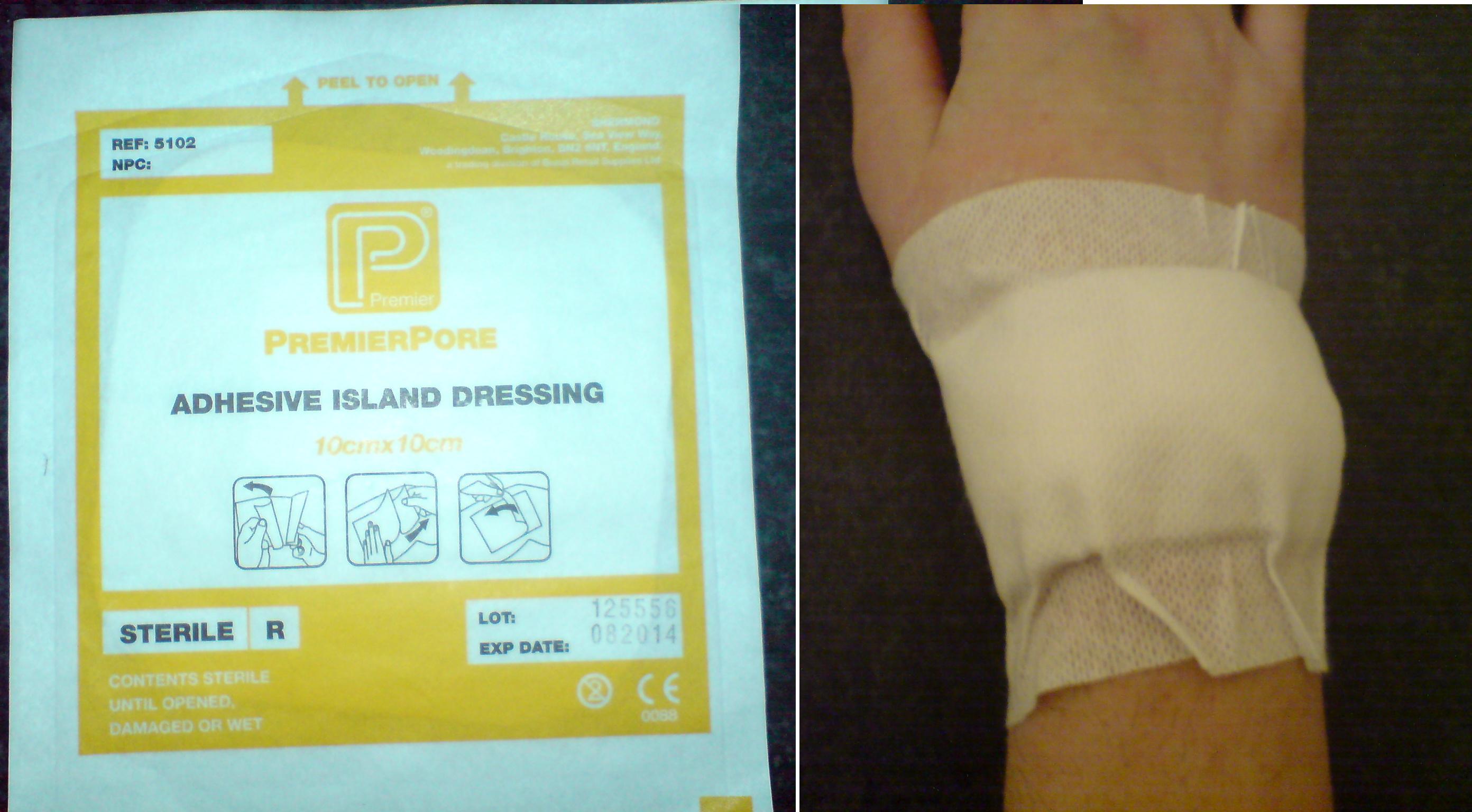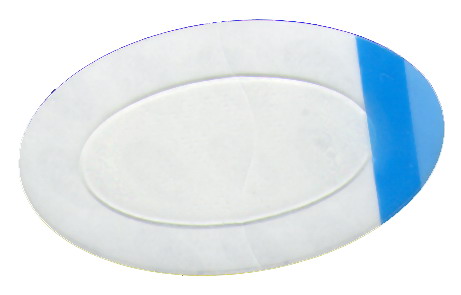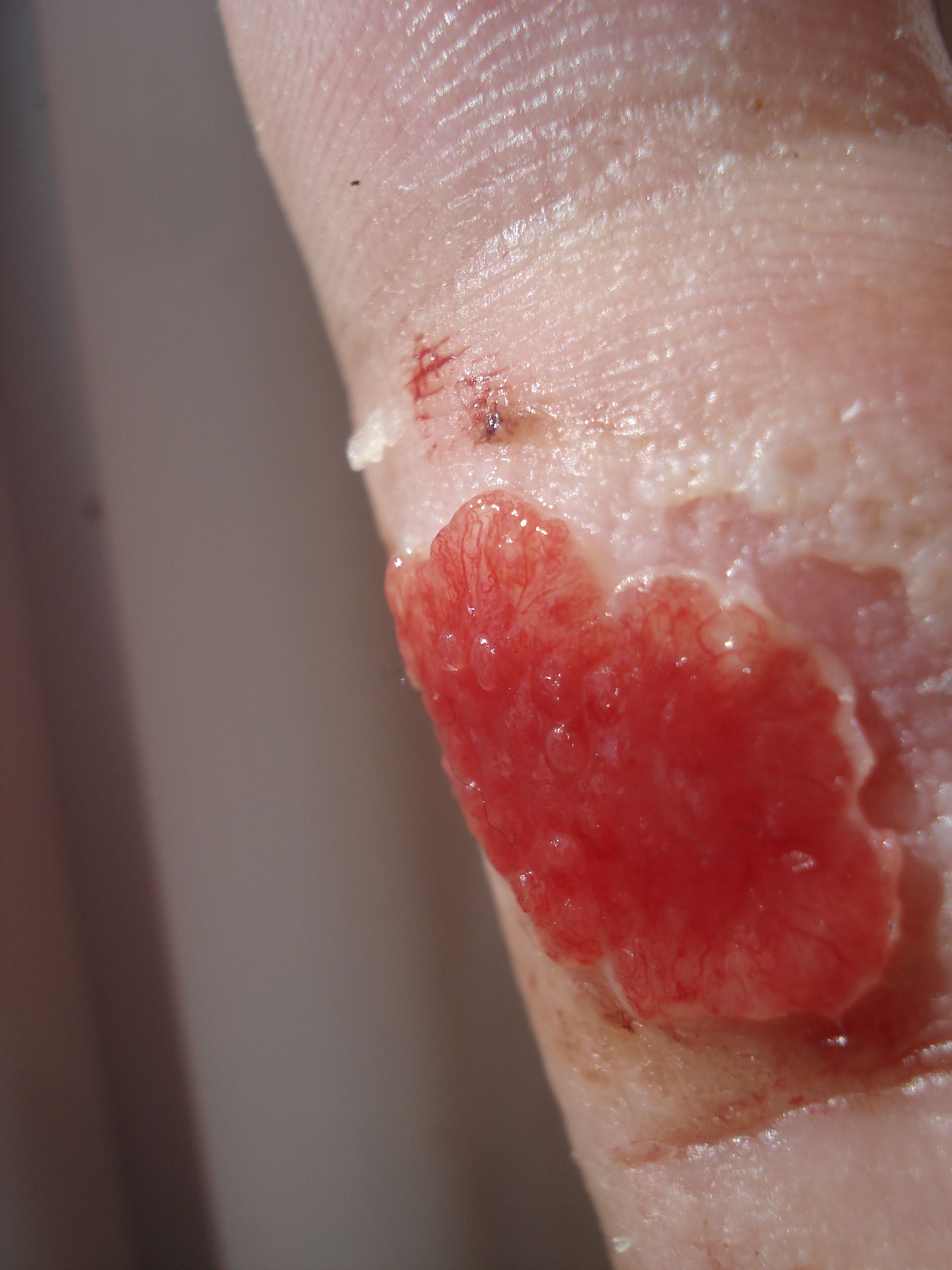|
Incision And Drainage
Incision and drainage (I&D), also known as clinical lancing, are minor surgical procedures to release pus or pressure built up under the skin, such as from an abscess, boil, or infected paranasal sinus. It is performed by treating the area with an antiseptic, such as iodine-based solution, and then making a small incision to puncture the skin using a sterile instrument such as a sharp needle or a pointed scalpel. This allows the pus fluid to escape by draining out through the incision. Good medical practice for large abdominal abscesses requires insertion of a drainage tube, preceded by insertion of a PICC line to enable readiness of treatment for possible septic shock. Adjunct antibiotics Uncomplicated cutaneous abscesses do not need antibiotics after successful drainage. In incisional abscesses For incisional abscesses, it is recommended that incision and drainage is followed by covering the area with a thin layer of gauze followed by sterile dressing. The dressing should b ... [...More Info...] [...Related Items...] OR: [Wikipedia] [Google] [Baidu] |
Surgery
Surgery ''cheirourgikē'' (composed of χείρ, "hand", and ἔργον, "work"), via la, chirurgiae, meaning "hand work". is a medical specialty that uses operative manual and instrumental techniques on a person to investigate or treat a pathological condition such as a disease or injury, to help improve bodily function, appearance, or to repair unwanted ruptured areas. The act of performing surgery may be called a surgical procedure, operation, or simply "surgery". In this context, the verb "operate" means to perform surgery. The adjective surgical means pertaining to surgery; e.g. surgical instruments or surgical nurse. The person or subject on which the surgery is performed can be a person or an animal. A surgeon is a person who practices surgery and a surgeon's assistant is a person who practices surgical assistance. A surgical team is made up of the surgeon, the surgeon's assistant, an anaesthetist, a circulating nurse and a surgical technologist. Surgery usually ... [...More Info...] [...Related Items...] OR: [Wikipedia] [Google] [Baidu] |
Dressing (medical)
A dressing is a sterile pad or compress applied to a wound to promote healing and protect the wound from further harm. A dressing is designed to be in direct contact with the wound, as distinguished from a bandage, which is most often used to hold a dressing in place. Many modern dressings are self-adhesive. Medical uses A dressing can have a number of purposes, depending on the type, severity and position of the wound, although all purposes are focused on promoting recovery and protecting from further harm. Key purposes of a dressing are: * Stop bleeding – to help to seal the wound to expedite the clotting process; * Protection from infection – to defend the wound against germs and mechanical damage; * Absorb exudate – to soak up blood, plasma, and other fluids exuded from the wound, containing it/them in one place and preventing maceration; * Ease pain – either by a medicated analgesic effect, compression or simply preventing pain from further trauma; * Debride ... [...More Info...] [...Related Items...] OR: [Wikipedia] [Google] [Baidu] |
Drain (surgery)
A surgical drain is a tube used to remove pus, blood or other fluids from a wound, body cavity, or organ. They are commonly placed by surgeons or interventional radiologists after procedures or some types of injuries, but they can also be used as an intervention for decompression. There are several types of drains, and selection of which to use often depends on the placement site and how long the drain is needed. Use and Management Drains help to remove contents, usually fluids, from inside the body. This is beneficial since fluid accumulation may cause distension and pressure, which can lead to pain. For example, nasogastric (NG) tubes inserted through the nose and into the stomach can help remove stomach contents for patients who have a blockage further along in their gastrointestinal tract. After surgery, drains can be placed to remove blood, lymph, or other fluids that accumulate in the wound bed. This helps to promote wound healing and allows healthcare providers to moni ... [...More Info...] [...Related Items...] OR: [Wikipedia] [Google] [Baidu] |
Suture (surgery)
A surgical suture, also known as a stitch or stitches, is a medical device used to hold body tissues together and approximate wound edges after an injury or surgery. Application generally involves using a needle with an attached length of thread. There are numerous types of suture which differ by needle shape and size as well as thread material and characteristics. Selection of surgical suture should be determined by the characteristics and location of the wound or the specific body tissues being approximated. In selecting the needle, thread, and suturing technique to use for a specific patient, a medical care provider must consider the tensile strength of the specific suture thread needed to efficiently hold the tissues together depending on the mechanical and shear forces acting on the wound as well as the thickness of the tissue being approximated. One must also consider the elasticity of the thread and ability to adapt to different tissues, as well as the memory of the thr ... [...More Info...] [...Related Items...] OR: [Wikipedia] [Google] [Baidu] |
Surgical Staple
Surgical staples are specialized staples used in surgery in place of sutures to close skin wounds or connect or remove parts of the bowels or lungs. The use of staples over sutures reduces the local inflammatory response, width of the wound, and time it takes to close. A more recent development, from the 1990s, uses clips instead of staples for some applications; this does not require the staple to penetrate. History The technique was pioneered by "father of surgical stapling", Hungarian surgeon Hümér Hültl. Hultl's prototype stapler of 1908 weighed , and required two hours to assemble and load. The technology was refined in the 1950s in the Soviet Union, allowing for the first commercially produced re-usable stapling devices for creation of bowel and vascular anastomoses. Mark M. Ravitch brought a sample of stapling device after attending a surgical conference in USSR, and introduced it to entrepreneur Leon C. Hirsch, who founded the United States Surgical Corporat ... [...More Info...] [...Related Items...] OR: [Wikipedia] [Google] [Baidu] |
Butterfly Stitches
An adhesive bandage, also called a sticking plaster, medical plaster, or simply plaster in British English, is a small medical dressing used for injuries not serious enough to require a full-size bandage. They are also known by the genericized trademarks of Band-Aid (as "band-aid" or "band aid" in Australia, Canada, India and the US) or Elastoplast (in the UK). Function The adhesive bandage protects the wound and scab from friction, bacteria, damage, and dirt. Thus, the healing process of the body is less disturbed. Some of the dressings have antiseptic properties. An additional function is to hold the two cut ends of the skin together to make the healing process faster. Design An adhesive bandage is a small, flexible sheet of material which is sticky on one side, with a smaller, non-sticky, absorbent pad stuck to the sticky side. The pad is placed against the wound, and overlapping edges of the sticky material are smoothed down so they stick to the surrounding skin. Adhesive ... [...More Info...] [...Related Items...] OR: [Wikipedia] [Google] [Baidu] |
Granulation Tissue
Granulation tissue is new connective tissue and microscopic blood vessels that form on the surfaces of a wound during the healing process. Granulation tissue typically grows from the base of a wound and is able to fill wounds of almost any size. Examples of granulation tissue can be seen in pyogenic granulomas and pulp polyps. Its histological appearance is characterized by proliferation of fibroblasts and new thin-walled, delicate capillaries (angiogenesis), infiltrated inflammatory cells in a loose extracellular matrix. Appearance During the migratory phase of wound healing, granulation tissue is: * light red or dark pink, being perfused with new capillary loops or "buds"; * soft to the touch; * moist; * bumpy (granular) in appearance, due to punctate hemorrhages; * pulsatile on palpation; * painless when healthy; Structure Granulation tissue is composed of tissue matrix supporting a variety of cell types, most of which can be associated with one of the following function ... [...More Info...] [...Related Items...] OR: [Wikipedia] [Google] [Baidu] |
Secondary Intention
Wound healing refers to a living organism's replacement of destroyed or damaged tissue by newly produced tissue. In undamaged skin, the epidermis (surface, epithelial layer) and dermis (deeper, connective layer) form a protective barrier against the external environment. When the barrier is broken, a regulated sequence of biochemical events is set into motion to repair the damage. This process is divided into predictable phases: blood clotting ( hemostasis), inflammation, tissue growth (cell proliferation), and tissue remodeling (maturation and cell differentiation). Blood clotting may be considered to be part of the inflammation stage instead of a separate stage. The wound healing process is not only complex but fragile, and it is susceptible to interruption or failure leading to the formation of non-healing chronic wounds. Factors that contribute to non-healing chronic wounds are diabetes, venous or arterial disease, infection, and metabolic deficiencies of old age.Enoch, S. ... [...More Info...] [...Related Items...] OR: [Wikipedia] [Google] [Baidu] |
MRSA
Methicillin-resistant ''Staphylococcus aureus'' (MRSA) is a group of Gram-positive bacteria that are genetically distinct from other strains of ''Staphylococcus aureus''. MRSA is responsible for several difficult-to-treat infections in humans. It caused more than 100,000 deaths attributable to antimicrobial resistance in 2019. MRSA is any strain of ''S. aureus'' that has developed (through natural selection) or acquired (through horizontal gene transfer) a multiple drug resistance to beta-lactam antibiotics. Beta-lactam (β-lactam) antibiotics are a broad-spectrum group that include some penams (penicillin derivatives such as methicillin and oxacillin) and cephems such as the cephalosporins. Strains unable to resist these antibiotics are classified as methicillin-susceptible ''S. aureus'', or MSSA. MRSA is common in hospitals, prisons, and nursing homes, where people with open wounds, invasive devices such as catheters, and weakened immune systems are at greater risk of heal ... [...More Info...] [...Related Items...] OR: [Wikipedia] [Google] [Baidu] |
Vancomycin
Vancomycin is a glycopeptide antibiotic medication used to treat a number of bacterial infections. It is recommended intravenously as a treatment for complicated skin infections, bloodstream infections, endocarditis, bone and joint infections, and meningitis caused by methicillin-resistant ''Staphylococcus aureus''. Blood levels may be measured to determine the correct dose. Vancomycin is also taken by mouth as a treatment for severe ''Clostridium difficile'' colitis. When taken by mouth it is poorly absorbed. Common side effects include pain in the area of injection and allergic reactions. Occasionally, hearing loss, low blood pressure, or bone marrow suppression occur. Safety in pregnancy is not clear, but no evidence of harm has been found, and it is likely safe for use when breastfeeding. It is a type of glycopeptide antibiotic and works by blocking the construction of a cell wall. Vancomycin was approved for medical use in the United States in 1958. It is on the Worl ... [...More Info...] [...Related Items...] OR: [Wikipedia] [Google] [Baidu] |
Gauze
Gauze is a thin, translucent fabric with a loose open weave. In technical terms "gauze" is a weave structure in which the weft yarns are arranged in pairs and are crossed before and after each warp yarn keeping the weft firmly in place. This weave structure is used to add stability to fabric, which is important when using fine yarns loosely spaced. However, this weave structure can be used with any weight of yarn, and can be seen in some rustic textiles made from coarse hand-spun plant fiber yarns. Gauze is widely used for medical dressings. Gauze can also be made of non-woven fabric. Etymology and history Gauze was traditionally woven in the Gaza region. The English word is said to derive from the place name for Gaza Webster's, 1913 ( ar, غزة ), a center of weaving in the region. Despite a prohibition on trade with non-Christians from religious authorities in medieval Europe, a fine type of silk known as ''gazzatum'' was imported from Gaza as early as the 13th cen ... [...More Info...] [...Related Items...] OR: [Wikipedia] [Google] [Baidu] |
Abscess
An abscess is a collection of pus that has built up within the tissue of the body. Signs and symptoms of abscesses include redness, pain, warmth, and swelling. The swelling may feel fluid-filled when pressed. The area of redness often extends beyond the swelling. Carbuncles and boils are types of abscess that often involve hair follicles, with carbuncles being larger. They are usually caused by a bacterial infection. Often many different types of bacteria are involved in a single infection. In many areas of the world, the most common bacteria present is ''methicillin-resistant Staphylococcus aureus''. Rarely, parasites can cause abscesses; this is more common in the developing world. Diagnosis of a skin abscess is usually made based on what it looks like and is confirmed by cutting it open. Ultrasound imaging may be useful in cases in which the diagnosis is not clear. In abscesses around the anus, computer tomography (CT) may be important to look for deeper infection. St ... [...More Info...] [...Related Items...] OR: [Wikipedia] [Google] [Baidu] |
.jpg)

.jpg)





